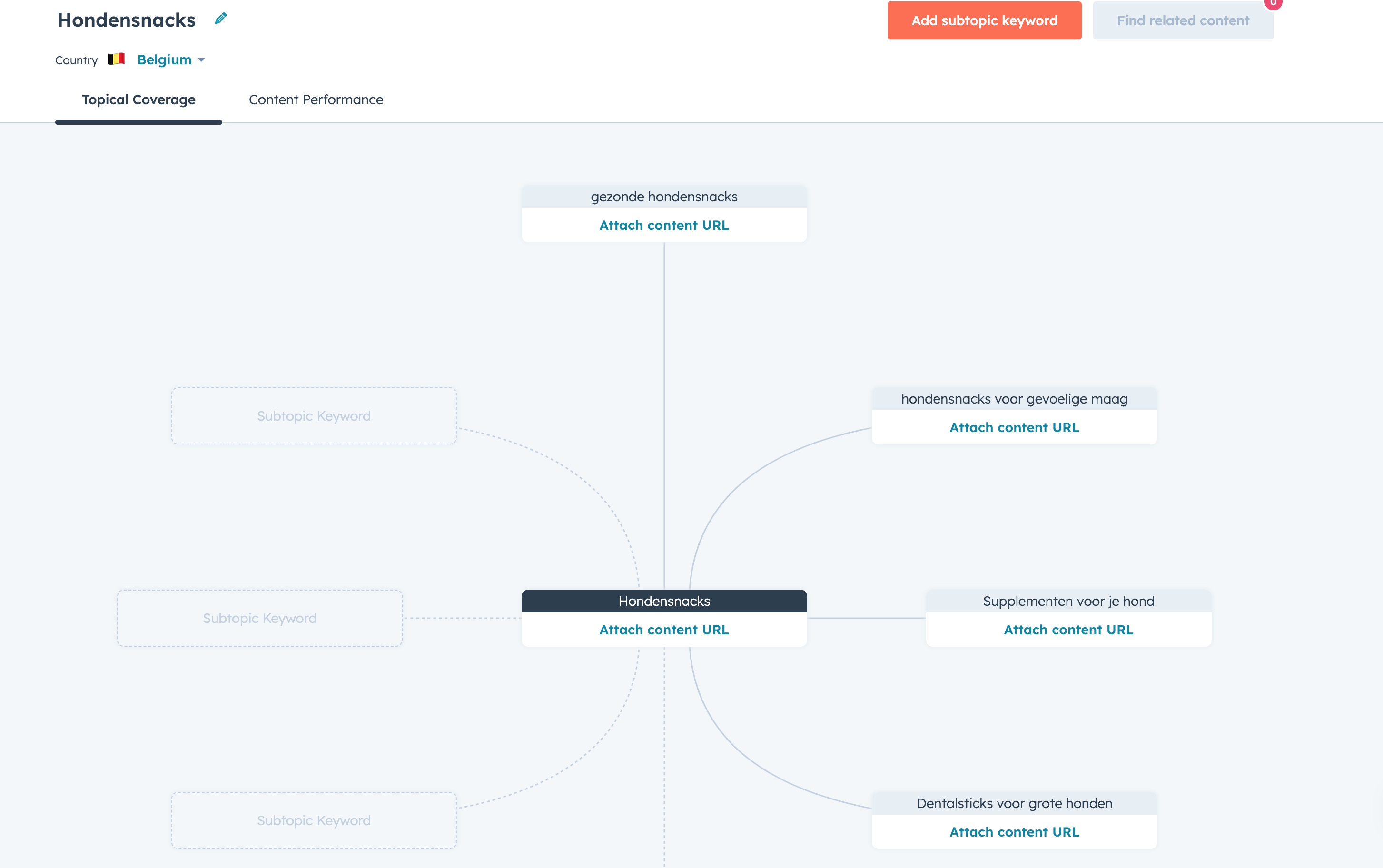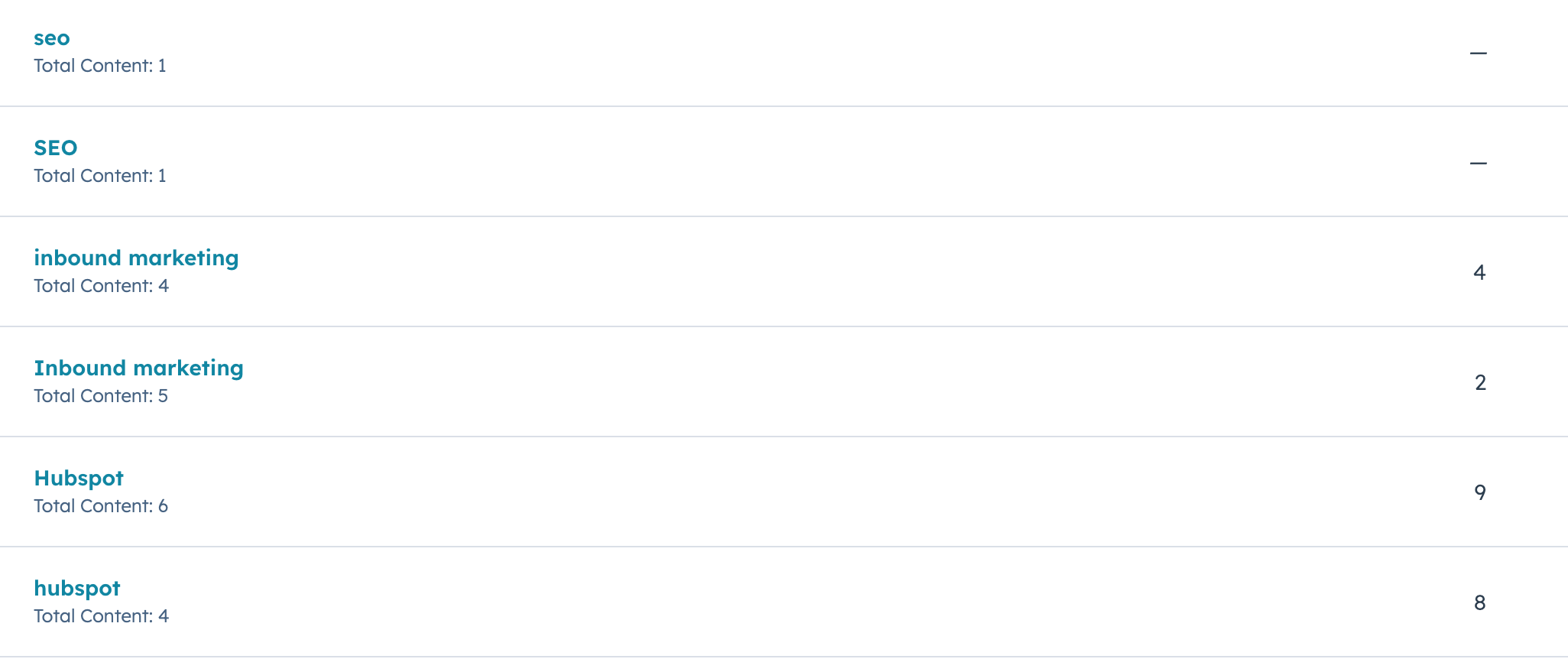12 min
Inhoudsopgave
The new player, the topic cluster model
This is where the Topic Cluster Model comes in. Unlike the traditional focus on individual keywords such as "Antwerp restaurant," this SEO strategy rather focuses on topics/topics where you all create content around restaurants in Antwerp.
With this model, you have several advantages:
- You improve the architecture of your website by creating mutual links in your pages
- Your related content is more easily discovered by Google
- So you will eventually get an increased visibility in search engines
What are Pillar Pages and why are they important for SEO?
The termpillar page refers to a page that is the foundation of your website's content strategy. A pillar page is a comprehensive detailed page with lots of content.
When you begin setting up a pillar page, choose a central topic that aligns with your content strategy. Consider broad topics such as "Inbound Marketing." This page serves as the "pillar" and aims to provide an overview of the topic in its broadest sense.
An essential aspect of pillar pages is the focus on broad keywords or keyword phrases. The pillar page concentrates on the overarching topic. Therefore, this is usually a broad keyword with a high search volume but also a higher Keyword Density (competition). This means more difficult to be found directly on. While subtopics focus on specific long-tail keywords. Long-tail keywords are more detailed search terms, such as "What are the benefits of Inbound Marketing?". While these are related to the broad keyword, they are often easier to rank for.
The primary purpose of pillar pages is to structure your Web site and organize your content around key topics. This is crucial to help search engines, such as Google, better understand and index your Web site, which in turn promotes ranking in search results.
Pillar Pages also help build authority within specific topics. They show search engines your expertise in a particular area.
To clarify with an example
Problem
Let's imagine you are an enthusiastic owner of an online pet supplies store with a focus on dog snacks. Initially, you start with a simple homepage and blog, focusing on the important keyword "dog snacks."
The challenge
But then you face a challenge. You soon discover that there are more than 1,000 different questions and variations on this topic, such as"Which dog snacks are the most popular?","How do you make your own healthy dog snacks?" and"Are there dog snacks for sensitive stomachs?". This means that if you will cover each of these questions separately without a link, your site will quickly become overloaded, repetitive and appear disorganized.
Solution
This is where the Topic Cluster Model comes to the rescue. Instead of a proliferation of individual posts, create a structured system. This will become your "pillar page. You should think of this as a comprehensive article on that overarching topic,"dog snacks." On the pillar page, you go into complete detail about this topic, this serves as the foundation of your cluster.
The"cluster content" then consists of specific articles that target the various long-tail keywords, such as"popular dog snacks,""healthy homemade dog snacks" and"dog snacks for sensitive stomachs. Each cluster page hyperlinks back to the "pillar page" and vice versa. This creates a cohesive and well-organized structure.
This way, if one of your pages performs well, the whole cluster benefits. Imagine that your article on"healthy homemade dog snacks" goes viral. This would not only increase the visibility of that particular article, but also strengthen your site's overall authority on dog snacks. Thus, the Topic Cluster Model provides an orderly and effective approach, optimizing the structure of your site for search engines.

How do HubSpot topic clusters work?
HubSpot's SEO tool makes it easy to build topic clusters yourself. It also offers help in visualizing your website architecture.
Below is a brief roadmap on how to get started with topic clusters in HubSpot.
1. Creating your content topic
If you're a starter, you should start with the most important topic for you and start from there. For example, you can start from questions like "What are the pain points you're eliminating?" "How is the customer using your product?" From the answers to these questions, you can form topics.
To create the topic cluster in HubSpot go like this:
- Log in to your HubSpot account (not a HubSpot user yet? Read more!)
- Go to Marketing> Content > SEO.
- Go toTopics and choose Add a topic and enter your topic here and chooseAdd.
- Under theRecommended Topics heading, you will also find topics that HubSpot recommends based on your entered website and industry.
Tip: If you choose to link your Google Search Console integration on the Topics tab, you'll see exactly which keywords generated what amount of views and clicks on your pages through Google search results.
2. Determine the associated subtopics
After you have created the topic cluster, move on to the subtopics associated with your topic cluster. These subtopics address a more detailed part of your pillar page. For this, it's best to figure out which long-tail keywords rank best.
To add your subtopics to the topic cluster, perform the following steps:
- ChooseAdd subtopic keyword toyour topic cluster in HubSpot.
- Next, enter your subtopic keyword here. You will also see how much search volume there is on this subtopic keyword and make HubSpot recommendations.
- Click Save
Tip: Each subtopic does need to be unique. It is recommended that you also do your own keyword analysis to determine if your subtopics are appropriate. An SEO tool like SEMRush will help you analyze search volume and help you prioritize your subtopics.
3. Organizing your pages into topic clusters
Use HubSpot's SEO tool to link your existing pages to your topic clusters. Your topic cluster overview in the HubSpot SEO tool will suggest where your existing pages fit into your topic clusters.
You can also do this manually in HubSpot by going through the following steps:
- Go to Marketing > Content > SEO.
- In your topic cluster overview, choose a subtopic.
- In the Attach Subtopic content sidebar, you can search for pages under Subtopic content or choose Add external URL for pages hosted outside HubSpot. Again, you'll see HubSpot's recommendations.
Cluster topics in multilingualism
The problem
HubSpot does not currently offer a built-in feature to create multilingual cluster topics. This can be a problem for organizations with websites in multiple languages that want to optimize their content strategy for another language.
Koho's tip?
We have a simple but effective solution here to get around this problem. By using a handy naming convention, you can clearly distinguish your cluster topics in different languages. For example, use Inbound Marketing with capital letters for the Dutch version and inbound marketing without capital letters, for the English version.
Curious to learn more about SEO strategies? Or would you like to talk to one of our experts? Request a conversation now!






